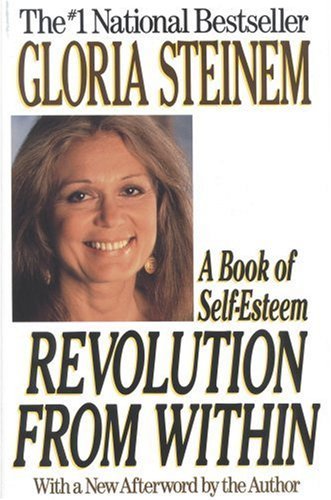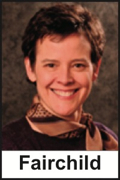Rascals case in brief
In the beginning, in 1989, more than 90 children at the Little Rascals Day Care Center in Edenton, North Carolina, accused a total of 20 adults with 429 instances of sexual abuse over a three-year period. It may have all begun with one parent’s complaint about punishment given her child.
Among the alleged perpetrators: the sheriff and mayor. But prosecutors would charge only Robin Byrum, Darlene Harris, Elizabeth “Betsy” Kelly, Robert “Bob” Kelly, Willard Scott Privott, Shelley Stone and Dawn Wilson – the Edenton 7.
Along with sodomy and beatings, allegations included a baby killed with a handgun, a child being hung upside down from a tree and being set on fire and countless other fantastic incidents involving spaceships, hot air balloons, pirate ships and trained sharks.
By the time prosecutors dropped the last charges in 1997, Little Rascals had become North Carolina’s longest and most costly criminal trial. Prosecutors kept defendants jailed in hopes at least one would turn against their supposed co-conspirators. Remarkably, none did. Another shameful record: Five defendants had to wait longer to face their accusers in court than anyone else in North Carolina history.
Between 1991 and 1997, Ofra Bikel produced three extraordinary episodes on the Little Rascals case for the PBS series “Frontline.” Although “Innocence Lost” did not deter prosecutors, it exposed their tactics and fostered nationwide skepticism and dismay.
With each passing year, the absurdity of the Little Rascals charges has become more obvious. But no admission of error has ever come from prosecutors, police, interviewers or parents. This site is devoted to the issues raised by this case.
On Facebook
Click for earlier Facebook posts archived on this site
Click to go to
Today’s random selection from the Little Rascals Day Care archives….
Click for earlier Facebook posts archived on this site
Click to go to
Today’s random selection from the Little Rascals Day Care archives….
Another child-witness, now grown, spills the beans
Sept. 8, 2015
“Jennifer (a pseudonym) reached out to me after seeing an interview I gave about the McMartin Preschool trial…. She said she had been involved in a similar case as a child and that her experiences with the police, the judicial system, and a series of therapists mirrored those of the McMartin children. Now an adult with a career and family of her own, she agreed to speak with me about her experiences during the trial and in the decades since….
“Jennifer’s experiences illustrate the consequences of the misguided ‘belief’ in children that so many therapists, parents, and cops professed during the 1980s….”
– From “Moral Panic and the Myth of Recovered Memory” by Richard Beck at Literary Hub (Aug. 18)
Although Beck presents more as a historian than a journalist, his interview with Jennifer is a significant addition to the sparse roster of recanting (or not) child-witnesses. Not surprisingly, her account offers numerous parallels not only to McMartin but also to Little Rascals:
- “lots of phone conversations and meetings” among parents
- an interviewer with “anatomically correct dolls”
- her initial insistence that “nothing had happened”
- “a tour of the jail” arranged by the therapist to assure her that the supposed molester was safely behind bars
- her capitulation in the face of endless therapy sessions, leading her to “finally just start… making stuff up.”
- the eventual overturning of her day-care teacher’s conviction
Might Jennifer’s coming forward, however tentatively, lead the way to more recantations by child-witnesses?
Anxieties about children still make us crazy
Aug. 16, 2013
“Ritual abuse may now seem an almost quaint aberration, a temporary fad that seized the popular imagination, as outdated as hula-hoops or disco fever. But our anxieties about children continue to affect our judgment. When a meta-analysis of research published in Psychological Bulletin (1998) suggested that not all children under the age of 18 were traumatized by having sexual experiences before adulthood, the U.S. House of Representatives passed a resolution condemning the association. Not surprisingly, the popular outcry that led to the Congressional resolution was sparked by talk show celebrity Laura Schlessinger.
“More recently, a book that explored whether overzealous response to fears about children and sexuality are harmful to the youth we seek to protect was published by the University of Minnesota press after trade publishers deemed it too controversial for their lists; Tim Pawlenty, then a state legislator, but who was elected governor of Minnesota in 2002, quickly moved to condemn the publication and the University for publishing it.”
– From “The Devil in the Details: Media Representation of ‘Ritual Abuse’ and Evaluation of Sources” by Barbara Fister in Studies in Media & Information Literacy Education (May 2003)
Steinem made case for believing the unbelievable
 Sept. 1, 2015
Sept. 1, 2015
“(As witnesses) children are even less likely to be believed when their stories involve extremes of sadism, collusion among families and communities (sometimes extending over several generations) and so-called ritual or cult abuse – including the torture and killing of animals to frighten children into silence – that are so terrible that authorities decide these things just can’t be true.
“Yet many instances of such ‘incredible’ crimes are documented, sometimes by adults after years of suppressed memory, sometimes by authorities who are now beginning to believe children enough to investigate their stories…..”…
– From “Revolution From Within: A Book of Self-Esteem” by Gloria Steinem (1993)
Steinem’s semi-autobiography was a best-seller, both profiting from and contributing to the nation’s heightened concern with self-esteem.
In addition to using Ms. magazine to tout the existence of “ritual abuse,” she also helped finance the search for the imaginary McMartin tunnels.
‘Long history of panic’ extended to day-care cases
 Feb. 6, 2013
Feb. 6, 2013
“Panic provides a rationale for action, sometimes overreaction or even manipulation. As such, it is the subject of heated accusation and denial that can create a swirl of confusion and frustration.
“Nonetheless, some lessons stand out in the long history of panic. There is no basis for imagining that the frenzied 19th century reactions to disease are a slumbering beast waiting to be roused. Too much government infrastructure and information stand between populations and unfettered panic….”
– From “A Brief History of Panic” by Amy L. Fairchild, David Merritt Johns and Kavita Sivara Makrishnan, public health researchers at Columbia University (the New York Times, January 28, 2013)
“Frenzied…. reactions” to disease epidemics may have subsided since the 19th century, but they were crucial in animating the day-care ritual-abuse prosecutions of the 1980s and ’90s. And “government infrastructure” – that is, district attorneys’ offices – wasn’t a deterrent but an accelerant!











0 CommentsComment on Facebook